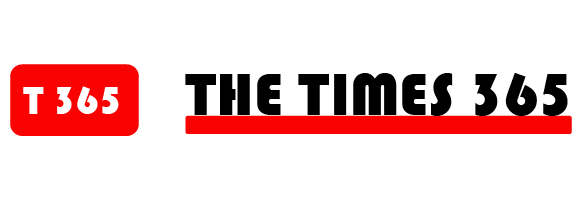Can you reach financial independence and retire within the next 10 years?
Yes, but it would take a huge savings rate.
I’ve never subscribed to the idea of retiring at 65 years old with an office cake and a gift watch. You can retire at any age—if you’re willing to live on a fraction of your income and invest the rest.
The higher your savings rate, the faster you reach financial freedom.
Savings Rate, Living Expenses, and Replacement Income
Your savings rate is the percentage of your income that goes toward investments, paying off debts early, or cash savings such as your emergency fund. If you bring home $5,000 per month after taxes and save and invest $2,000 of it, you have a 40% savings rate.
This means you live on $3,000 per month. Those lower living expenses not only let you save more each month, but they also mean you don’t need as much passive income to reach financial independence. In this example, you would only need $3,000 per month in passive income—or $36,000 per year.
Compare that to someone with a 10% savings rate who spends $4,500 per month. They need to replace $54,000 per year in income—a feat that will take them far longer if they’re only saving $500 per month.
The “Safe Withdrawal Rates” Model of Retirement
We all need to answer the question, “How much do I need to save for retirement?”
The classic 4% Rule offers one way of answering this question. It posits that if you withdraw 4% of your nest egg in the first year of retirement and adjust upward by inflation each year after, your nest egg should last at least 30 years. So, if you have $1 million saved for retirement, you can withdraw $40,000.
Following the rule’s logic, you can multiply your annual living expenses by 25 to reach your target nest egg (25 x 4 = 100%). So, in the example above, annual living expenses of $36,000 would require a nest egg of $900,000. Annual living expenses of $54,000 would need a seven-figure nest egg of $1,350,000.
Even at these modest annual retirement incomes, older Americans lag far behind the savings they’ll need. The average baby boomer’s retirement savings is only $136,779, which would yield only $5,471 per year in income according to the 4% Rule.
Note that this rule was calculated based on a portfolio of stocks and bonds, not real estate. More on that later.
How Long It Takes to Retire Based on Savings Rate
So, we calculated how quickly you could retire based on the 4% Rule. It required an assumption for return on investment, so I used a generous 10% return for these calculations. Why so generous? Because the average return on the S&P 500 since its inception is around 10.5%.
The average stock investor doesn’t earn nearly that much because they try to get fancy by picking stocks or timing the market. But I digress.
To illustrate these numbers tangibly, I ran them for someone with a $100,000 take-home income ($8,333.33/month). But the same number of years would apply to each savings rate, regardless of the amounts.

Even with extreme savings of 80% of your income, you still couldn’t retire in under five years.
But for real estate investors, that doesn’t represent the whole story.
How Real Estate Tweaks the Math
We’ve all read case studies of people who retired young with real estate. How could they do it if even an 80% savings rate wouldn’t let you retire in under five years?
Because real estate changes the math of early retirement.
You don’t have to worry about safe withdrawal rates because you aren’t withdrawing money from your nest egg. You keep earning ongoing income from your rental properties without selling any assets.
If you only need $3,000 per month to reach financial independence, and you can earn $500 per month in cash flow from each rental property you buy, you only need six properties to retire. And while that might still sound daunting, remember that you can finance the bulk of each property with other people’s money.
Using the BRRRR strategy, you can invest without leaving a single dime of your own money invested in each property post-refinance.
Real estate buffers you against inflation as well. You can raise rents to adjust for inflation—it’s one reason I replace bonds in my portfolio with real estate.
All of this means real estate investors can earn higher cash-on-cash returns than 10% and withdraw—or more accurately collect—more than 4% of their nest egg each year.
Working Before and After Financial Independence
The overwhelming majority of people I’ve interviewed who have reached financial independence didn’t actually “retire” to never work again. Instead, they went on to work on fun or fulfilling projects that didn’t necessarily pay quite as well as their old day job.
But they still earned money. In retrospect, they could have quit their day job much earlier, living on a combination of their passive income from investments and their new active income.
Continuing the example above, you wouldn’t need to wait until you reached $36,000 per year in passive income from investments before quitting your day job. You could quit when you got halfway there, as long as you found other fun ways to bring in the additional $18,000.
For example, many real estate investors get their real estate license to help their investing work. While a real estate agent’s income is variable based on the number of sales made, you could potentially earn enough commissions to bridge the gap after quitting your day job.
Or become a freelance writer, flip houses, pour wine at a winery, or do consulting work. Personally, I’m not yet financially independent. However, I still live something akin to a good lifestyle—living overseas most of the year on a combination of my online business income and a few fun side gigs.
Final Thoughts
The chart above is a starting point for plotting your own course and timeline to financial independence, not the final word on the subject.
Invest in a mix of stocks and real estate to bend the math of cash-on-cash returns and the 4% Rule. Start planning your ideal side gig after you quit your day job but before you’re completely financially independent. Don’t succumb to the mainstream tendency to spend almost every penny you earn in a vain attempt to keep up with the Joneses.
If you want real wealth, save more money, invest it, and get off the hedonic treadmill.
Early financial freedom is possible.
Building wealth is always possible, even while working full-time, earning a median income, and paying off debt. Set for Life gives young professionals the action plan they need to conquer their financial goals and achieve early financial independence.
What’s your plan for reaching financial freedom and retiring? How does real estate fit in? Let us know in the comments below!
Note By BiggerPockets: These are opinions written by the author and do not necessarily represent the opinions of BiggerPockets.







